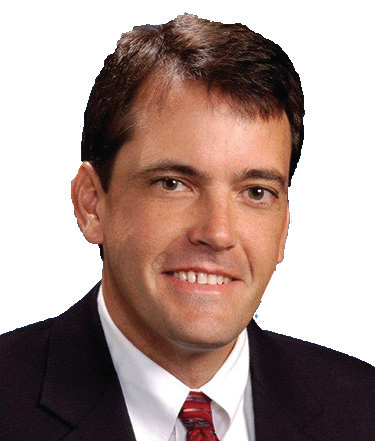As leaders from government agencies determine how best to develop a future space architecture, one thing is certain: Advances in technology will help drive a new approach to space.

Exciting leaps in space-based technologies present new ways of looking at issues to deliver affordable and secure solutions—with evolving technology behind hosted payloads leading us to a more efficient and smarter future.
The rigor of launch and a complex space environment requires long-term performance for critical missions and demands thoughtful refinement to adapt ground components for space use.
The good news is that technological breakthroughs in industry are enabling unprecedented progress to reduce cost, shorten delivery schedules and deliver high performance capabilities.
This column’s question for HPA Members is…
From your perspective, as members of the Hosted Payload Alliance, what new/advanced technologies are you excited about?

“Important considerations when adding a hosted payload are power, weight and physical size. The more hosted payloads require from the host satellite, the fewer the available resources for the primary payloads. Boeing is interested in technologies that make hosted payloads more weight- and power-efficient. Gallium Nitride (GaN)-based products such as Solid State Power Amplifiers (SSPAs) and Low Noise Amplifiers (LNAs) can reduce footprints for many hosted payloads. Another relatively mature technology is a Field Programmable Gate Array (FPGA). FPGAs can be leveraged to provide fast turn digital solutions necessary for hosted payloads, and enable the customization of processors necessary to implement complex solutions within the tight schedule constraints of a commercial satellite acquisition. Separately, Boeing also has an interest in exportable encryption developments that will support payloads of national importance as hosted payloads are integrated or launched on a more diverse set of satellites and launch vehicles.”—Jim Mitchell, Vice President, Boeing Commercial Satellite Services

“We think that hosted payloads will play a key role in the development of multiple new technologies. A great example of that is our work with NASA on the laser communications relay demonstration (LCRD). As the payload and ground system are being developed we are working on the interfaces so that the demonstration can meet the requirements of a commercial schedule. Optical communications use an uncongested portion of spectrum compared to the radio frequency (RF) communications generally used to transmit data from space. We think laser communications has great potential to provide order of magnitude higher data rates than RF for point to point communications, to enable access to much more of the vast amounts of data that are being gathered from distant planets, including images and video. For commercial satellites, laser communications could provide data at rates that are faster than today’s RF rates, with much less mass and power. It is great that NASA is looking at commercial capabilities for future space data relay needs, and we are excited at the prospects for both Earth Orbiting and Deep Space missions. “—Al Tadros, Vice President of DoD and Civil Business, SSL

“I am most excited about the capabilities available today and, more importantly, in the near future, for hosted payloads with the new high throughput satellites (HTS) coming on-line. The innovative, efficient, and flexible designs being implemented in multi-spot, high frequency re-use satellites bring unprecedented throughputs to end users. Designs being worked on and proposed provide even more flexibility, performance and resiliency. Hosted payloads can and should leverage the improved communication capabilities resident on their host satellites.”—Mark Daniels, Vice President, Engineering and Operations, Intelsat General Corporation

“As government agencies continue to struggle with tight budgets, there are emerging technologies being advanced by commercial entities that are gaining the attention of scientists, investors, and Congressional members. The 2014 Congress considered a bill to advance space-based commercial weather data opportunities. Unfortunately the Senate didn’t consider the bill in 2014 but we look forward to the 2015 Congress re-engaging in this great opportunity. Advanced weather collection capabilities have been hampered for years as current Programs of Record ran over budget and behind schedule. The proven and rapidly advancing technologies available through commercial investments will take root over the next few years, the only question that remains is: Will the U.S. be the leader or wait to be a follower.”—Tim Deaver, Vice President, Corporate Development, SES Government Solutions

“Space calls for high speed and low power digital electronics, high efficiency RF transmitters, sensitive low noise receivers, and low weight components. Ground consumer electronics demand is moving component manufacturers in a direction that complements space needs and we can adapt advances driven by the commercial electronics industry to the space environment. Lower feature size solid state electronics enable more processing power per pound and watt, smaller total size, less total power, and reduced demands for thermal control. This fits right into the hosted payload equation. We know current payloads can be miniaturized with advanced digital, sensor, and RF technology. Payloads that today require a free flier platform can be substantially reduced in size, weight, and power while improving capacity, performance, flexibility, and reliability. That said, it requires both vision and determination to make the right choices and exploit the art of the possible to meet mission needs at lower total ownership costs.”—Tim Frei, Vice President, Communication Systems, Northrop Grumman

“Our world has become a very dynamic and fast changing place, and our customers’ mission needs change at the same pace. Reconfigurable payloads provide the flexibility needed to address customers’ evolving needs. A software defined payload architecture such as Harris’ AppSTAR™ provides a reconfigurable, multi-mission platform, enabling mission managers to change the function of the payload on the fly. The software re-programmability enables the use of a mature, space qualified hardware platform, accelerating the timelines to space, and provides greater flexibility to align host platforms and hosted payload schedules.”—Allen Lindsay, Vice President of Responsive Solutions, Harris Corporation
Editor’s note: HPA Chair Nicole Robinson will be representing the Alliance during the Hosted Payload and Smallsat Forum track at Satellite 2015. She is part of the panel session “Marching Toward the Milestones: Next Steps for Commercially Hosted Government Payloads” March 16th at 9:00 a.m.
Established in 2011, The Hosted Payload Alliance (HPA) is a satellite industry alliance whose purpose is to increase awareness of the benefits of hosted government payloads on commercial satellites. The HPA seeks to bring together government and industry in an open dialogue to identify and promote the benefits of hosted payloads. The HPA (www. ww.hostedpayloadalliance.org/):
• Serves as a bridge between government and private industry to foster open communication between potential users and providers of hosted payload capabilities
• Builds awareness of the benefits to be realized from hosted payloads on commercial satellites
• Provides a forum for discussions, ranging from policy to specific missions, related to acquisition and operation of hosted payloads
• Acts as a source of subject-matter expertise to educate stakeholders in industry and government.
The Benefits of Hosted Payloads
A hosted payload is a portion of a satellite, such as a sensor, instrument or a set of communications transponders that are owned by an organization or agency other than the primary satellite operator.
The hosted portion of the satellite operates independently of the main spacecraft, but shares the satellite’s power supply, transponders, and in some cases, ground systems.
The concept of a hosted payload was developed in order to enable government organizations to make use of commercial satellite platforms in order to save costs and create a more distributed architecture for space assets.
Choosing to piggyback a hosted payload on a commercial satellite has many benefits:
• Shorter time to space. Because the development of an entire satellite system is not required, a hosted payload on a commercial satellite can reach space in a fraction of the time that it would take to develop a free flyer program. Roughly 20 commercial satellites are launched to GEO orbit each year and each one presents an opportunity to add on additional capability.
• Lower cost. Placing a hosted payload on a commercial satellite costs a fraction of the amount of building, launching and operating an entire satellite. Cost reductions can result from shared integration, launch and operations with the host satellite.
• A more resilient architecture. Hosted payloads enable a more resilient space architecture by distributing assets over multiple platforms and locations. Rather than creating a single platform with multiple capabilities that could be a target for adversaries, spreading capabilities over multiple locations has the potential to contribute to a more resilient space architecture.
• Increased access to space. Roughly 20 commercial launches each year provides multiple opportunities for access to multiple orbit locations during the year.
• Operational options. Hosted payloads have multiple options to use existing satellite operations facilities with shared command and control of the hosted payload through the host satellite, or a completely dedicated and separate system operated by the hosted payload owner.


